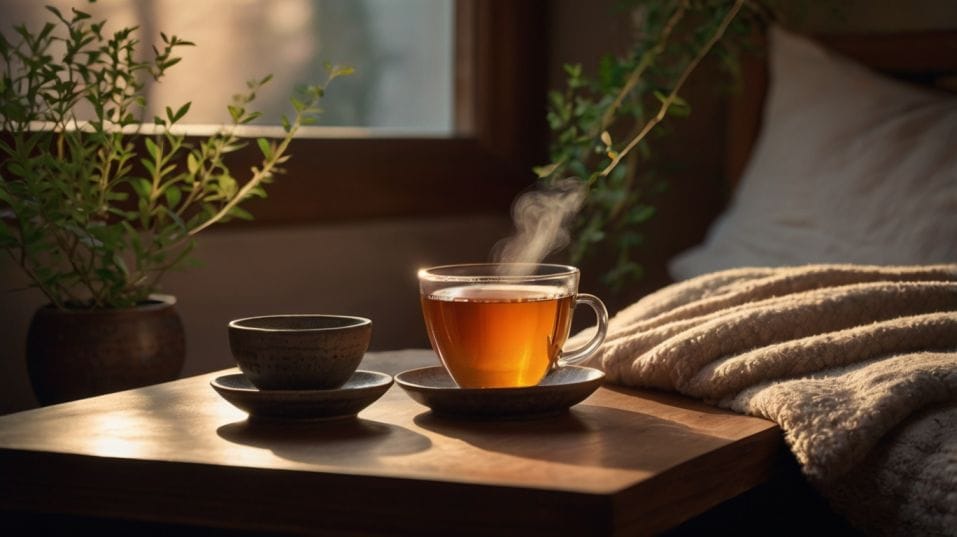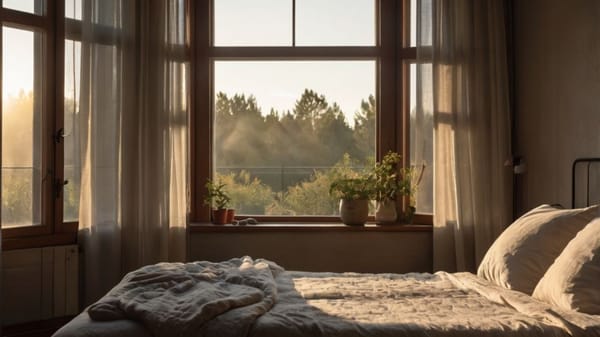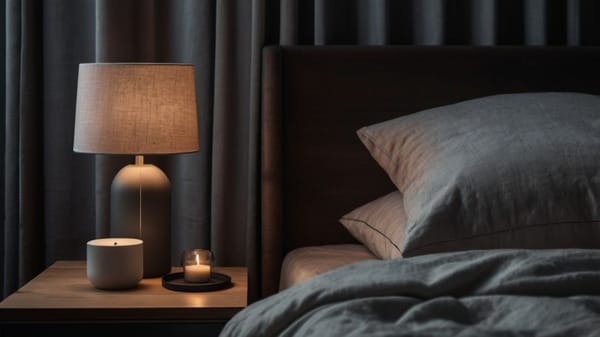How Cultural Rituals Around Sleep Can Improve Your Routine
Discover timeless global rituals that train your body to sleep better—without gadgets, gimmicks, or guesswork. Rest deeper, wake brighter.

What if the secret to better sleep isn’t in your mattress—but in your mindset? Around the world, cultures have used simple, powerful rituals to fall asleep faster, stay asleep longer, and wake up clearer.
You don’t need gadgets or gimmicks. You need rhythm. With the right wind-down cues, your body can shift from wired to restful—on command. Ready to make bedtime the best part of your day? Let’s look at what the world already knows.
Why Rituals Work (and Why You Need Them)
Modern life trains you to think of sleep as a switch you flip off when you're finally done doing everything else.
But your brain doesn’t work that way. It needs cues. Rituals act as a bridge between wakefulness and rest—signaling your nervous system to power down.
What separates cultural sleep practices from generic “sleep hygiene” tips is meaning. They’re embedded with purpose.
Whether it’s a hot bath in Japan, a communal tea in the Middle East, or rhythmic prayer in Indigenous communities, the ritual itself carries emotional and physical weight. That’s what makes it stick.
You can use that same structure to design your own nightly wind-down. But first, it helps to understand how the rest of the world does it—and what science says about why it works.

Heat, Cold, and the Science of Temperature Cues
In Japan, bathing is sacred. Not just for cleanliness, but for restoration. The ofuro—a deep, narrow soaking tub—isn’t meant for scrubbing. It’s for soaking in silence, usually in hot water just below boiling temperatures.
This habit has a measurable effect on sleep latency (how quickly you fall asleep) and depth. Here’s the science: immersion in hot water raises your core body temperature.
Once you step out, the resulting drop in temperature mimics the body’s natural nighttime dip in core temp—triggering melatonin release and preparing the brain for rest.
Want the same result? Take a hot bath or shower about 90 minutes before bed. Don’t check your phone afterward. Dim the lights. Let your body cool down naturally.
Then there’s the flip side: Scandinavian sauna culture. In Finland, for example, it’s common to finish a sauna session with a plunge in cold water or exposure to frigid air.
The sharp contrast between heat and cold stimulates circulation and then relaxes the nervous system. That physiological shift creates a powerful sleep-inducing effect—without a single pill or supplement.
You can replicate this at home. After a warm shower, rinse under cool water for 30 seconds. Or open a window for a burst of cold air before you sleep. It’s primitive, powerful, and proven.
The Rhythm of Rest: When Timing Isn’t Everything
Most Western sleep advice tells you to go to bed and wake up at the same time every day. That’s not wrong—but it’s incomplete.
In many cultures, sleep is fluid. In Latin America and parts of the Mediterranean, the siesta still holds cultural weight.
In West African and Aboriginal Australian communities, segmented sleep—two distinct phases of sleep interrupted by quiet wakefulness—is historically common.
These patterns respect your natural energy rhythms. Not everyone sleeps best in one uninterrupted 8-hour block.
Some people thrive with a longer evening sleep and a short mid-afternoon nap. Others naturally wake up briefly in the middle of the night and fall back asleep an hour later. That’s not broken—it’s ancient.
So don’t panic if your sleep doesn’t look textbook-perfect. The real trick is identifying your pattern and building consistent rituals around it.
Keep your wind-down consistent, even if your schedule flexes. Let sleep be responsive, not rigid. When your cues stay the same, your body knows what to do.
Scent, Sound, and Setting: Designing Sleep Space with Intention
In Morocco and other parts of North Africa, burning herbs like rosemary, myrtle, or lavender in the evening is common.
It’s more than aromatherapy—it’s spatial storytelling. The scent marks a transition from day to night. The brain catches the signal and starts powering down.
In India, Ayurvedic practices encourage oiling the scalp or feet with warm sesame oil before bed. This isn’t just for skin—it soothes the nervous system and creates a strong association between the act and the result: calm and rest.
These practices work because they combine sensory input with repetition. The more consistently you expose your body to the same scent, texture, or sound before sleep, the faster your brain links that input to “time to rest.”
Build your own ritual:
- Use a specific essential oil or herbal tea every night
- Dim the lights around the same time
- Play ambient sound or gentle music that cues your system to wind down
None of this is fluff. Sensory cues can shift you from a sympathetic (alert) state into parasympathetic (rest-and-digest) mode—exactly where you need to be to fall asleep naturally.
Communal Calm: The Missing Piece in Western Sleep Culture
In many cultures, winding down is not a solo sport. Middle Eastern families often gather over tea or light snacks before bed—not heavy meals, but warm, calming rituals that emphasize connection.
In parts of Africa and Southeast Asia, evening storytelling or group prayer helps regulate breath, heart rate, and mental state.
Modern Western routines tend to isolate sleep as a performance—something you do alone, with max control. But connection and calm go hand in hand. Human contact—even quiet presence—lowers cortisol and improves sleep readiness.
Even if you're not sharing a home with others, you can mirror this with digital detox time, phone-free conversations, or simply sitting quietly with someone (or yourself) in a relaxed environment before bed.
Final Thoughts: Start Simple, Repeat Often
Here’s the bottom line: Better sleep starts before your head hits the pillow. The rituals that cultures around the world have used for centuries aren’t complicated—they’re consistent. They tell your body, “It’s time.”
You don’t need to copy every tradition. Just choose one or two elements that feel right for your space, your pace, and your preferences.
Tonight, set a low light. Brew some tea. Take a warm shower. Burn a calming scent. Then do it again tomorrow. And again.
Sleep doesn’t have to be a struggle. Make it something you look forward to—something that starts long before the lights go out. Start now. Make rest your ritual.




